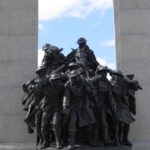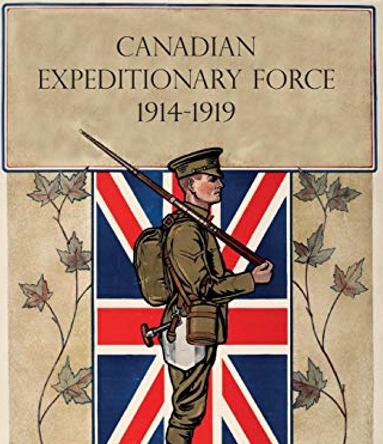The Canadian Armed Forces (CAF), like many military organizations around the world, is facing a recruitment crisis that raises questions about both the present state of military service and the broader societal values and politics of engaging youth in national defense. While military recruitment has always been a complex challenge, the particular difficulties faced today echo long-standing tensions in Canadian history—tensions that go back to the wartime struggles over conscription, voluntary service, and the often fraught relationship between politics and military duty.
Recruitment in the 21st Century: The Present Challenge
In recent years, the CAF has grappled with a serious shortfall in recruitment numbers. As of 2023, military officials estimated that the forces were short about 16,000 personnel, with some specialized roles in critical need of filling. The crisis is not just about numbers but the types of individuals the CAF needs—engineers, medical personnel, and technologically skilled recruits who can handle the demands of a rapidly modernizing military. Recruitment campaigns have emphasized the diversity of roles within the military, yet there remains a disconnect between the message and the resonance with young Canadians.
There are several reasons for this disconnect. First, the public perception of military service has shifted in an age of relative peace at home and instability abroad. For younger generations, military engagement may seem disconnected from their daily lives, lacking the sense of immediacy or national urgency that once accompanied service. The perception of military involvement as distant, particularly in conflict zones like Afghanistan or in peacekeeping operations far from home, may make recruitment less appealing to those whose lives are firmly rooted in civilian careers.
Another major issue is competition from the private sector. Highly skilled technical and medical professionals are in demand across Canada’s rapidly evolving job market, and the military simply cannot match the salaries and career flexibility offered by civilian employers. Even the pension and benefits package, once a major draw for military careers, faces stiff competition in an era where private companies are enhancing their own employee benefits in response to labor shortages.
The CAF has attempted to respond by modernizing recruitment campaigns, moving beyond the heroic imagery of soldiers on the frontlines and instead promoting the breadth of opportunities in the military, from cybersecurity experts to humanitarian assistance. Yet the task is daunting, as these messages compete with a broader societal trend away from traditional concepts of national service, loyalty, and sacrifice that once fueled military enlistment.
The Legacy of Conscription: A Historical Echo
This crisis in recruitment brings back memories of one of Canada’s most divisive historical issues: conscription. During both World War I and World War II, the question of whether Canadians should be required by law to serve in the military tore at the fabric of the nation, exposing deep rifts between English and French Canadians and between those who viewed military service as a duty versus those who believed it was an imposition by the state.
In 1917, at the height of the First World War, Prime Minister Sir Robert Borden faced the dilemma of dwindling voluntary enlistment. The early waves of enthusiastic volunteers, many eager for adventure or swept up by patriotic fervor, had been exhausted, and the brutal realities of trench warfare on the Western Front made recruitment harder with each passing month. Borden’s government introduced the Military Service Act, enforcing conscription and sparking a political firestorm, particularly in Quebec. French Canadians, many of whom felt alienated by what they saw as an English-speaking government’s war, resisted the call to arms. The issue of conscription created a political crisis, which nearly tore the nation apart, particularly after the infamous riots of 1918.
The Second World War followed a similar trajectory. Although Canada’s initial entry into the war in 1939 was met with broad popular support, Prime Minister William Lyon Mackenzie King sought to avoid the divisive issue of conscription for as long as possible. A promise of “no conscription for overseas service” helped him weather the political storm through the early years of the conflict. Yet, by 1942, with mounting casualties and the need for reinforcements, the government introduced conscription once again. The result was a repeat of the tensions of 1917—protests in Quebec, resistance from those who saw it as an unjust imposition, and national disunity. In the end, the conscription issue left deep scars in the Canadian political landscape, echoing through the post-war years and shaping attitudes toward military service for generations.
The Politics of Recruitment: Then and Now
The political undercurrents of recruitment—whether voluntary or enforced—have always been influenced by broader societal trends and values. In the early 20th century, military service was often framed as a moral duty, a way for young men to prove their loyalty to the Crown and their country. Recruitment campaigns of the time emphasized not only the adventure and camaraderie of military life but also the moral righteousness of defending the British Empire. These campaigns played on notions of masculinity and patriotism, ideals that resonated strongly in a society that still saw the British connection as central to Canadian identity.
During the Second World War, recruitment posters, radio broadcasts, and films continued to emphasize the moral duty of service, but with a stronger focus on the defense of democracy and the fight against fascism. The threat posed by Nazi Germany and Imperial Japan created a sense of existential urgency that spurred enlistment, despite the specter of conscription. The government’s message was clear: the war was not just a European conflict, but a global struggle for freedom, and Canada had to play its part.
In the post-war era, however, the politics of recruitment began to shift. As Canada moved into the Cold War period, recruitment campaigns started to reflect a new kind of service—one that emphasized peacekeeping and global stability rather than war. Canada’s role in creating United Nations peacekeeping forces under the leadership of Prime Minister Lester B. Pearson gave the military a new identity as a force for good on the world stage. Recruitment materials reflected this change, portraying the Canadian soldier as a diplomat and humanitarian as much as a warrior. Yet even then, the underlying message was still one of national duty and service to a greater cause.
Today’s recruitment challenges are a far cry from the patriotic fervor of the early 20th century or even the moral clarity of the Cold War era. In an age of fractured political discourse and the rise of individualism, convincing young people to enlist in the armed forces has become a complex balancing act between personal values, career prospects, and broader societal issues. For many, the decision to serve is no longer driven by notions of duty or sacrifice but by pragmatic concerns—whether the military can offer a stable career, education, and advancement in an increasingly competitive job market.
The Changing Nature of Service
One of the key shifts in recruitment strategy has been the attempt to redefine what military service means in the 21st century. No longer is the focus solely on combat roles. The CAF has highlighted its involvement in disaster relief, humanitarian aid, and peacekeeping operations. Campaigns have sought to appeal to those who may not have considered military service by emphasizing opportunities in technical fields, leadership training, and personal development.
Yet even as the military diversifies its roles, the underlying challenge remains: how to connect with a generation that is less inclined to see military service as a necessary part of national life. In previous eras, the military’s role in national defense was a given, reinforced by the experiences of world wars and global conflicts. Today, with Canada largely shielded from direct threats and military action mostly occurring overseas, the sense of immediacy and urgency that once drove recruitment has diminished.
Moreover, the military has had to contend with shifting societal attitudes toward authority, structure, and discipline—values that have traditionally been at the core of military life. Younger generations, shaped by a culture of digital connectivity and a desire for work-life balance, may see the military’s hierarchical structure and demands for discipline as less appealing than in previous eras.
The Future of Recruitment: Learning from the Past
To overcome these challenges, the CAF may need to draw lessons from its own history. The voluntary service campaigns of World War I and II, despite their flaws, were successful in part because they appealed to a sense of national duty, offering young people a role in something larger than themselves. Today’s recruitment campaigns must find a way to evoke that same sense of purpose, even in an era when the nature of national service is evolving.
Looking ahead, it will be critical for the CAF to address the economic realities that compete with military recruitment. If the military is to remain competitive in attracting talent, it must offer not only a sense of purpose but also clear career paths, opportunities for advancement, and competitive compensation. At the same time, the CAF must continue to emphasize the diverse roles within the military, showing that service in the armed forces is not just about combat but about building a safer, more stable world.
In the end, the story of recruitment in the Canadian Armed Forces is one of adaptation—how a military shaped by the demands of world wars and the Cold War can find its place in a rapidly changing global and national landscape. The recruitment issues of today, while challenging, are not insurmountable, and by looking to the past, the CAF can find a way forward that connects with the next generation of Canadians.





